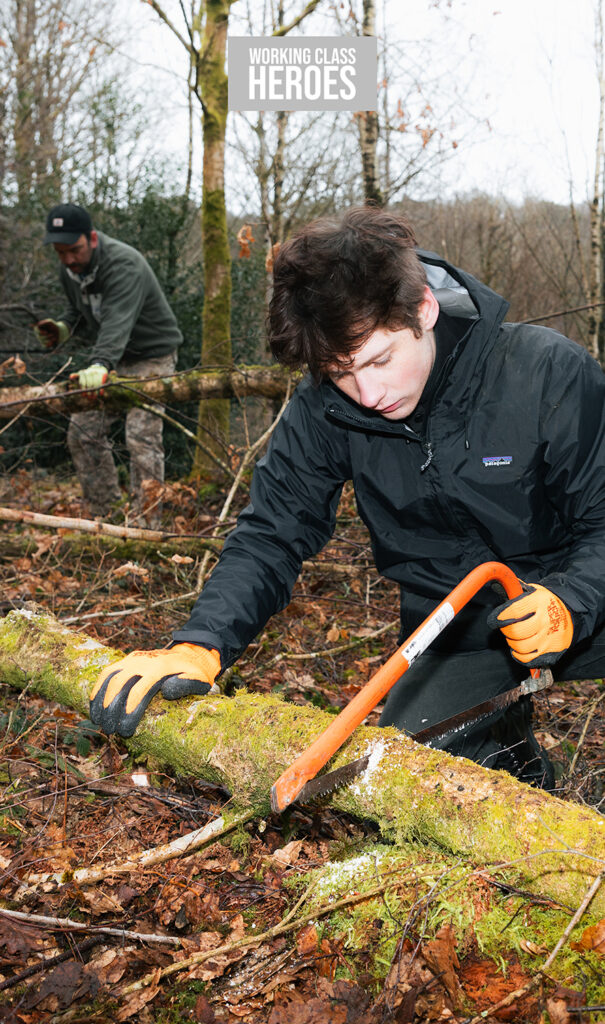
Recently we joined Cumbria Woodlands and The Coppice Co-op again for round 2 of thinning broadleaf back up at Haverthwaite. As we mentioned last time when trees are planted, the work doesn’t stop there. Continued management of these woodland areas is essential.
The purpose of this is activity is to improve the quality of the woodland and the trees within it. The high density of trees in young broadleaf plantations encourages fast upwards growth and reduced branch size. As the trees age and grow they begin to shade each other, it’s important to remove lower grade trees to allow the stronger and more favourable trees flourish.
A lot of the work we carried out this time was the processing of trees that The Coppice Co-op had already felled for us. This involved getting equipped with a pair of loppers and a saw, with these in hand we took aim at the felled trees and got stuck in.
- Step 1 was to trim all of the smaller branches off from the main log, this allowed us to separate and categorise the different parts of the tree.
- Step 2 was to cut the logs up into 2 meter lengths, this is allows them be easily transported and also fit into the charcoal kiln.
- Step 3 was to carry them and pile them up near the access path to be taken away.
The smaller unusable branches that were cleaned from the logs were placed into piles. These piles of thin branches and twigs will slowly decompose and eventually recycle their nutrients back into the ground.
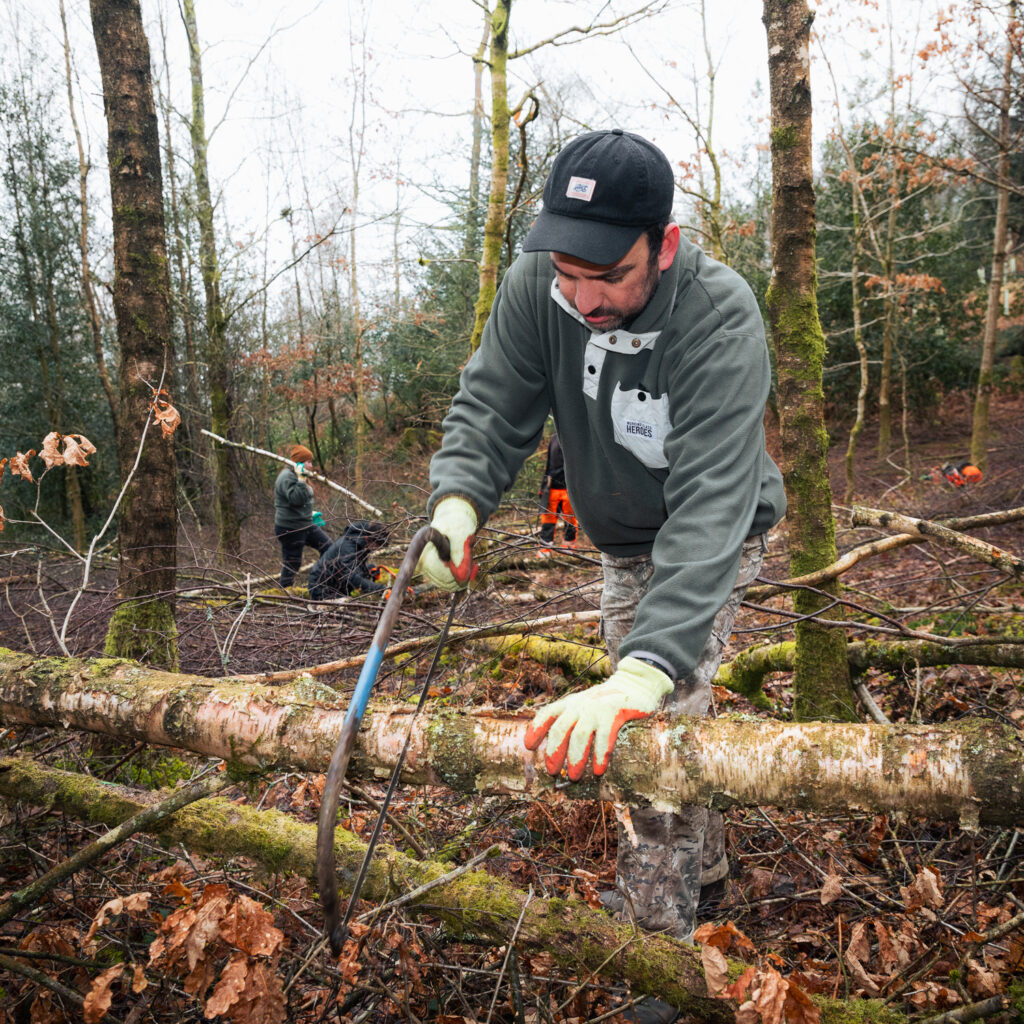
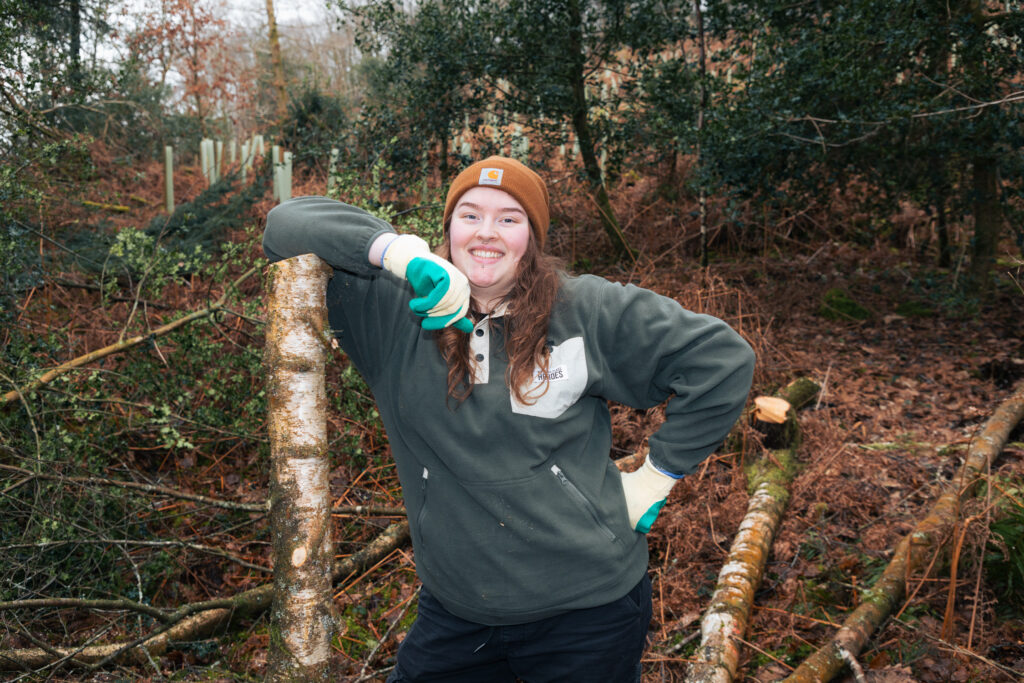
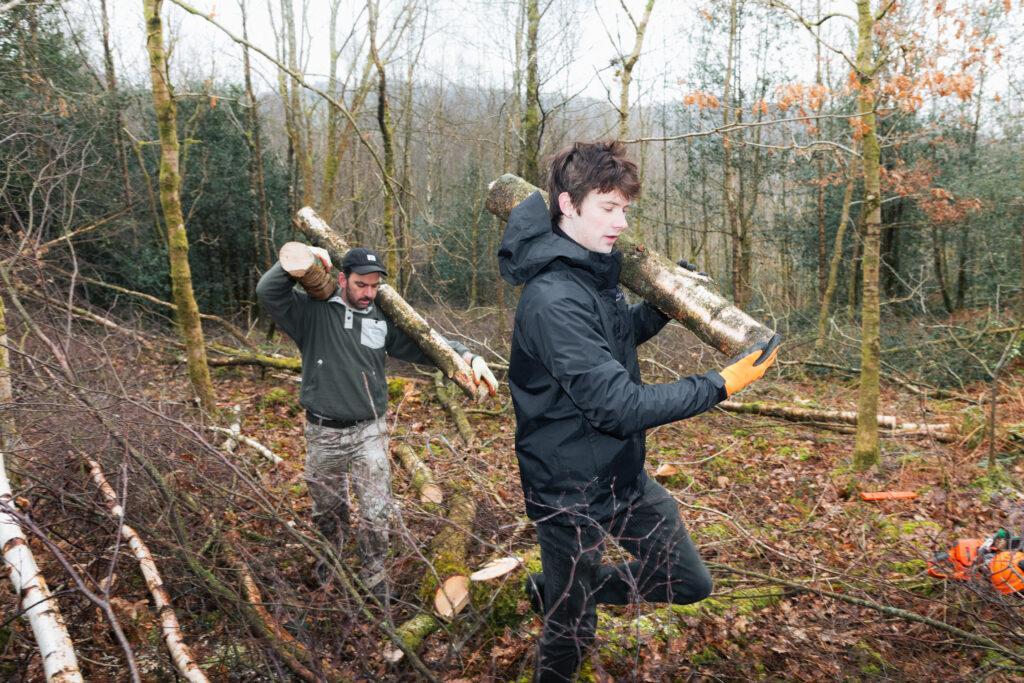
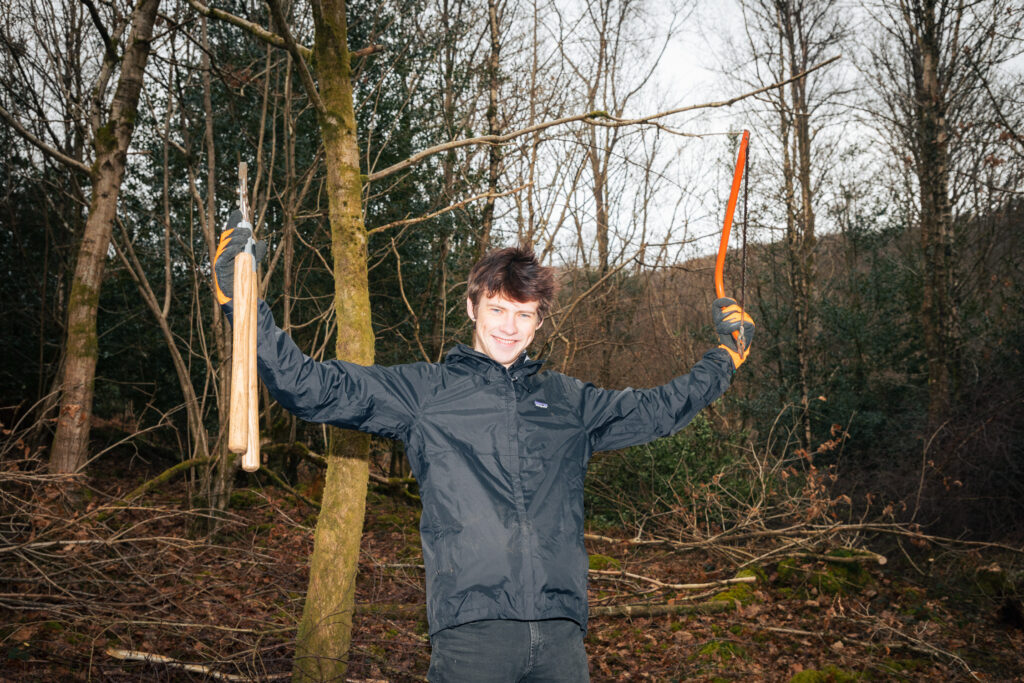
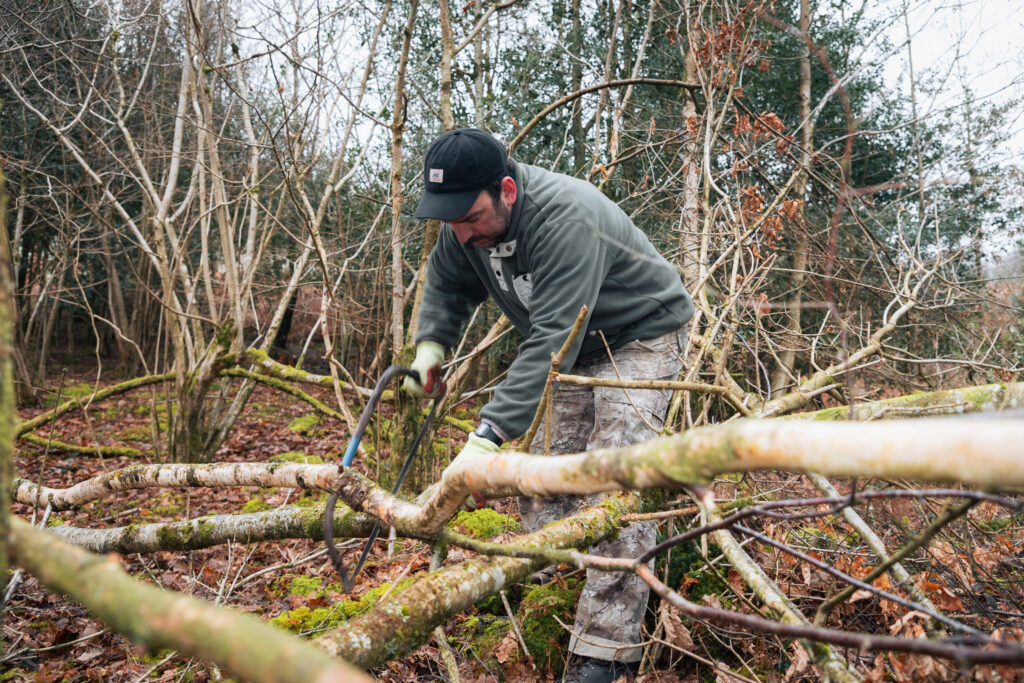
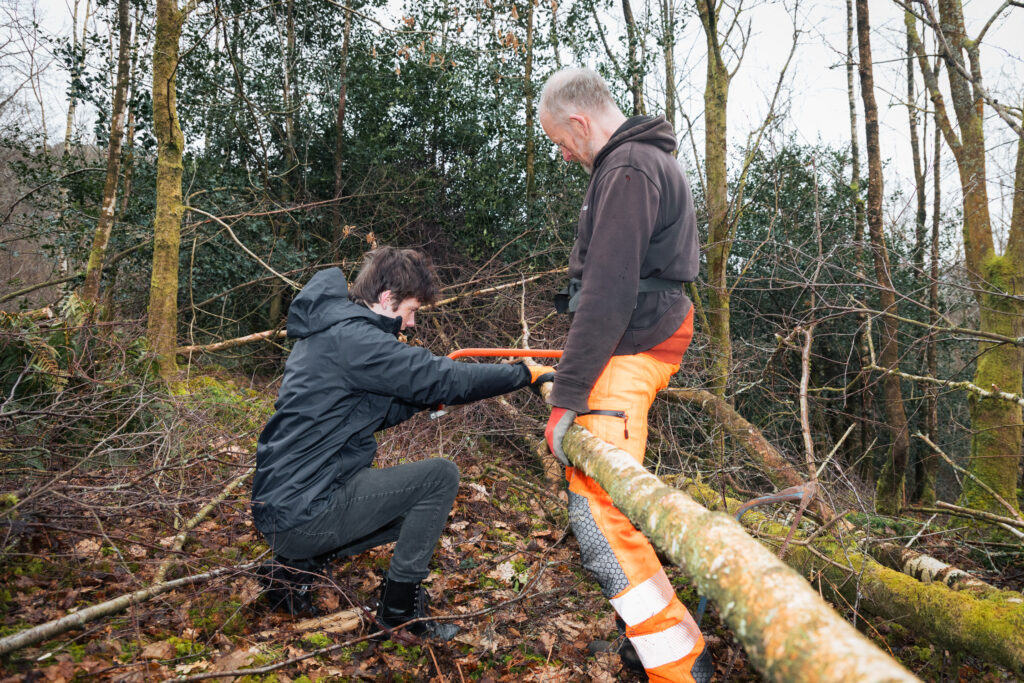

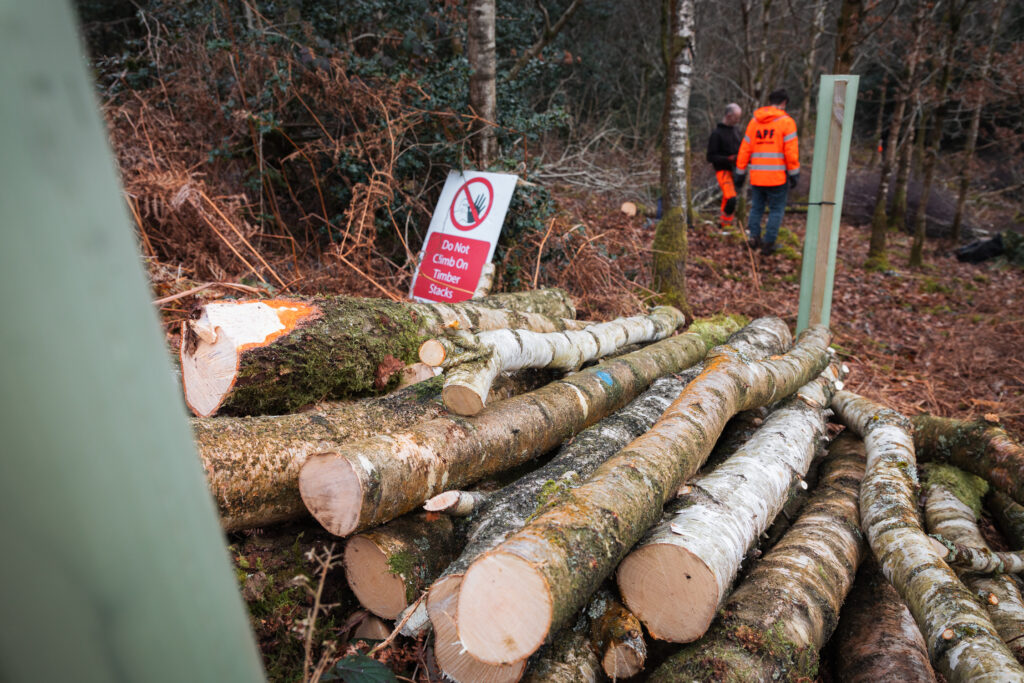
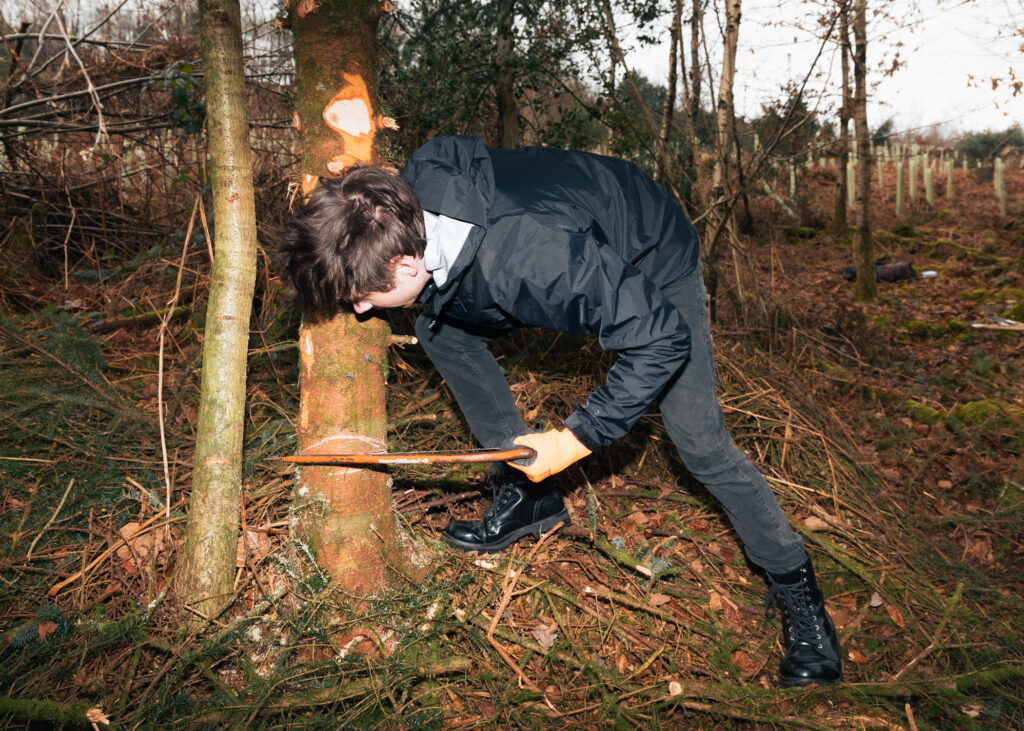
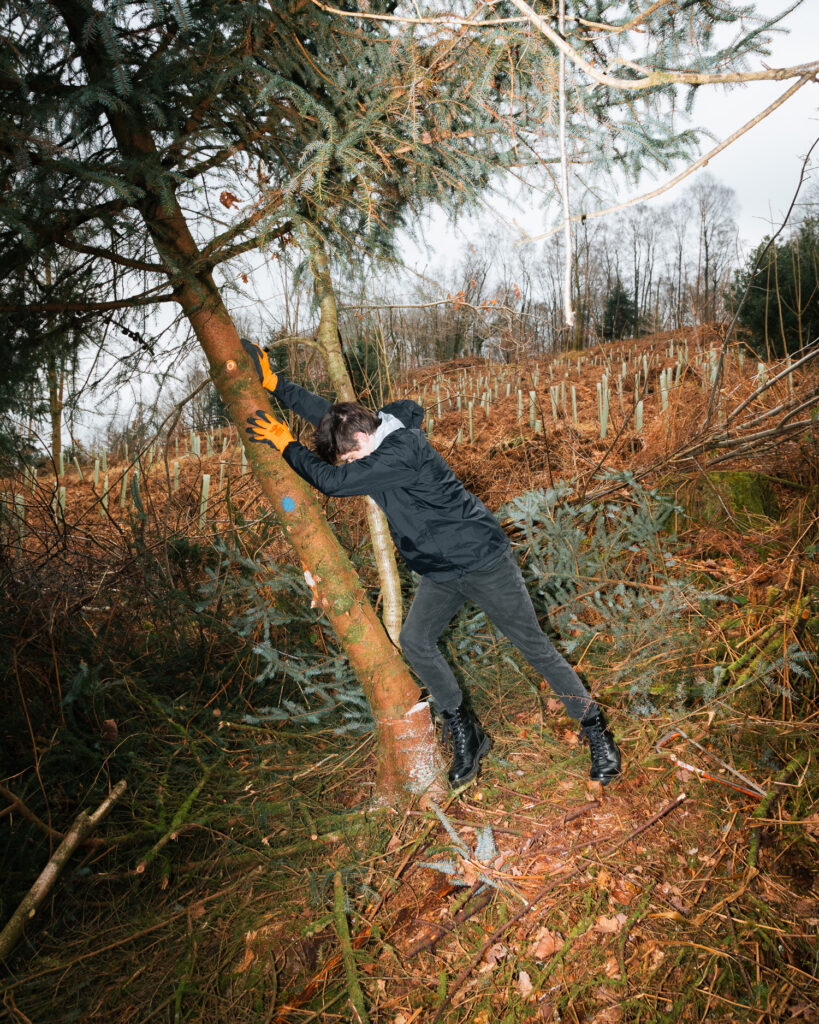
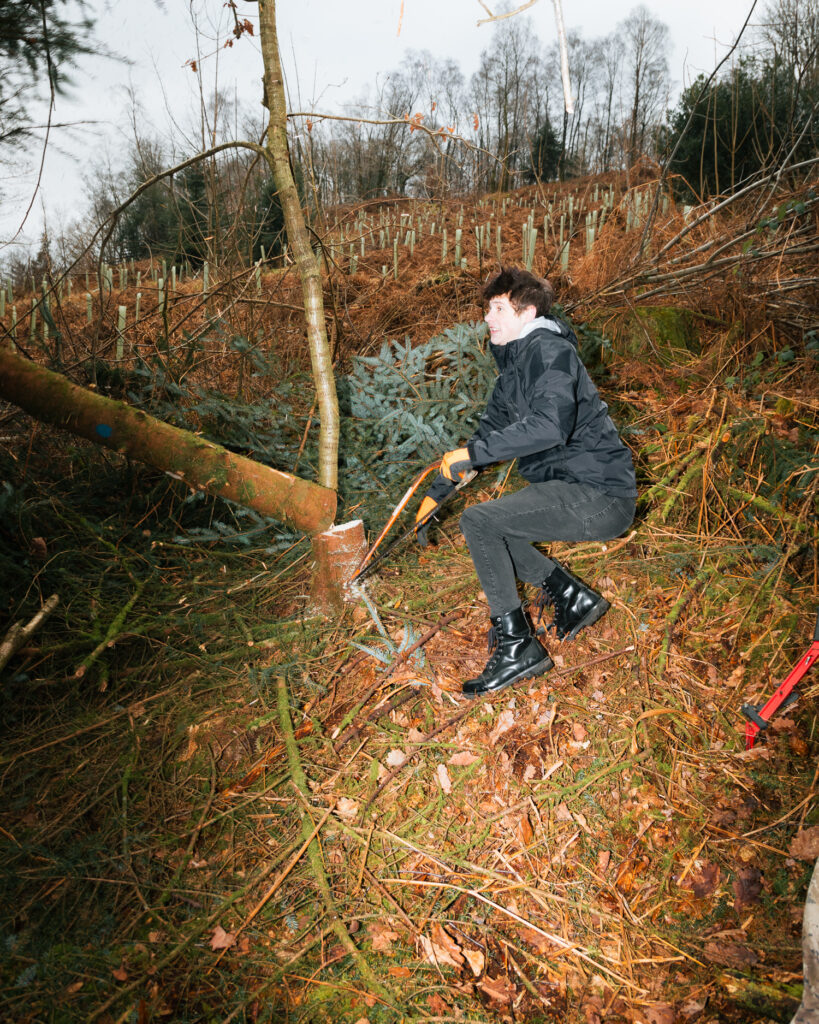
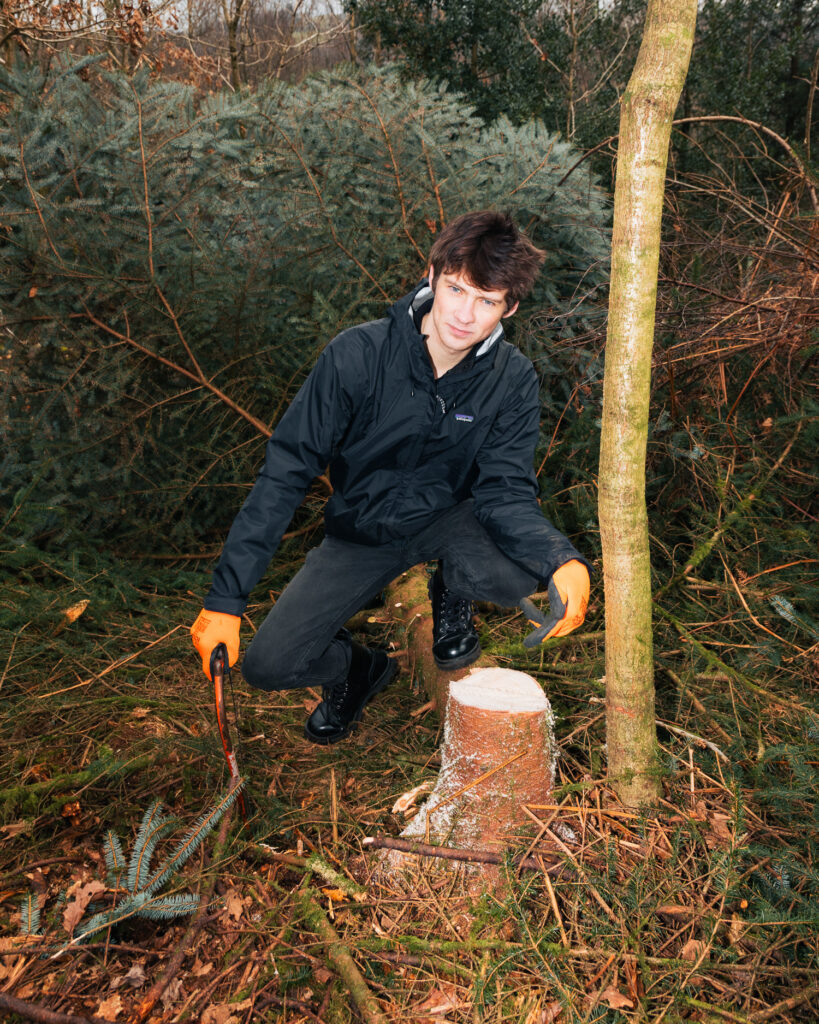
The Oak and Spruce trees shown above are the same age, but their growth rates differ significantly. Oak, a hardwood, grows slower with tighter rings, while Spruce, a softwood, grows faster with more spaced rings (At least in the UK). To make sure the Spruce here doesn’t outcompete the oak we’re removing it, this also prevents it from seeding and spreading unwanted Spruce seeds in this area of woodland.
Spruce were planted in abundance in the UK after World War 1 to help address timber shortages and create a strategic reserve of timber. Due to their fast growth rate they were and are still used heavily in the UK’s timber industry, they make up around 50% of all commercial plantations. While spruce remain important in the UK, the focus in this ancient woodland is on promoting the growth of native species like Oak.
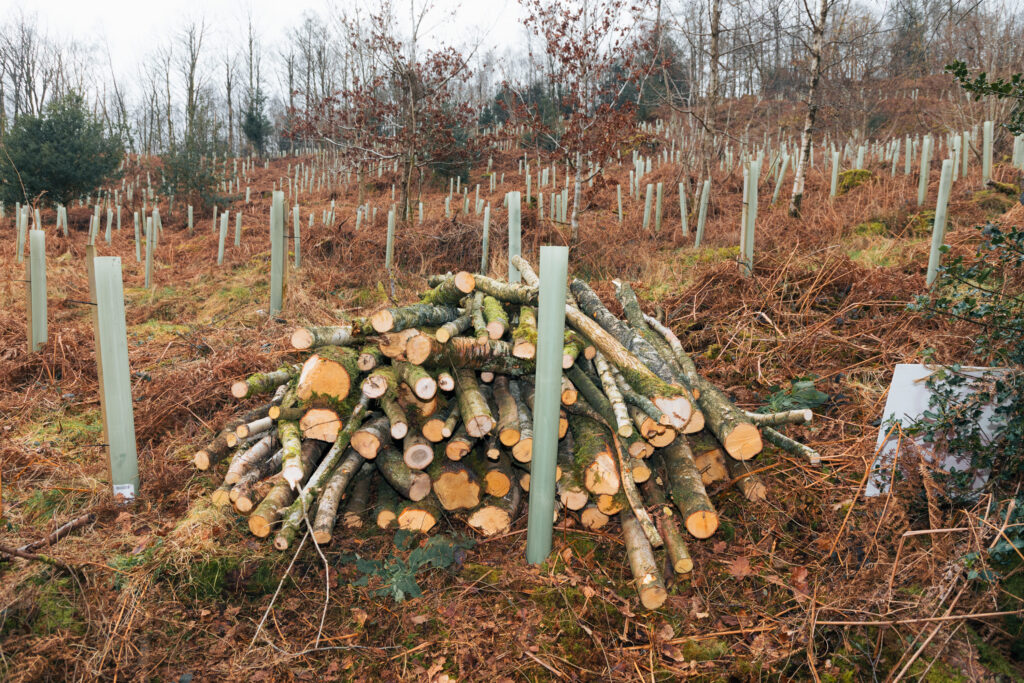
Another bountiful haul ready to be turned into Charcoal.












